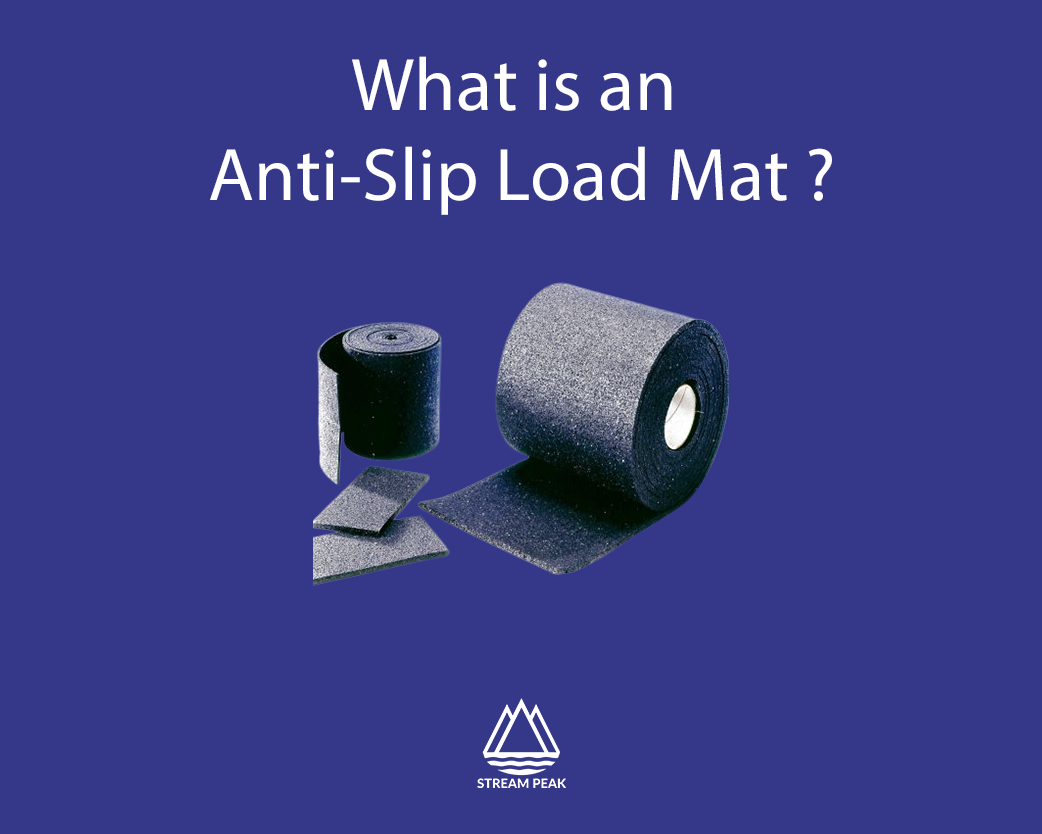
What is an Anti-Slip Load Mat?
With enormous goods of varied weights delivered over vast distances daily, cargo transportation by road, rail, sea, or air can be risky. Therefore, for damage prevention, fastening loads require holding strength to maintain the load in such circumstances.
Every cargo must be secured following the applicable laws governing motor vehicle traffic, with 80% of its weight in the front and 50% on the sides and back. To prevent the load from moving due to centrifugal and mass forces, particularly during braking or turns, adequate load-securing measures must be in place.
The friction force, which keeps the load on the loading surface to some level to combat the load moving, is a crucial component in securing loads. The best way to secure loads is to increase the friction force.
Practical anti-slip mats can help businesses prevent hazards by:
- Capture fluids or trash with suitable drainage holes so the user will not directly step on them.
- Have textured surfaces for better footing.
- A high-quality product composition, effective wear resistance, and chemical breakdown prevention.
Using suitable anti-slip mats can reduce potential slip dangers. Both mild and catastrophic injuries can result from slips, which reduces productivity. Everyone must cooperate to create a safe working environment by detecting potential hazards, properly employing safety mats and general workspace maintenance.
Features of Anti-Slip Load Mats
Textured Exterior
By enhancing grip, a textured mat surface enhances worker safety. High-Duty Grit and Fatigue-Step Grit Top include carbide-bonded “grit” top surfaces that offer reliable grip even in greasy environments. To improve grip, several types of mats could have a diamond-patterned surface.
Drainage openings
Drainage holes allow liquids and swarf to pass through, preventing them from becoming a tripping or slide hazard and from remaining on the mat’s surface.
Chemical resistance
Most workplaces will be exposed to liquids, oils, or grease, particularly those in the manufacturing, engineering, and food sectors. It’s critical to select the proper anti-slip mat for the workplace while taking chemical compatibility into mind. 100% nitrile mats resist grease, chemicals, and oils. The type of matting you select will also depend on the temperature in each workspace. For overall well-being, high-quality anti-slip mats also offer tiredness alleviation.
Benefits of Anti-Slip Load Mats
Greater Safety in Wet Environments
Some surfaces—like tile and laminate—become incredibly slick when wet. Slip and falls on damp floors are the cause of several industrial accidents. When used in wet environments, anti-slip mats can considerably lower the risk of employee injuries. Anti-slip mats improve traction while preventing wetness as a cost-effective safeguard for worker safety.
Comfort
Due to their anti-fatigue qualities, anti-slip load mats are also advantageous for employees’ productivity. Anti-slip mats can offer comprehensive foot, leg, and back support when implemented in locations where workers must stand for extended periods. They also aid in avoiding the negative health impacts that might result from prolonged standing on hard floors without anti-fatigue mats.
Protection for Your Floors
Anti-slip mats can be utilised to safeguard your floors. There are instances when you want to prevent damage to your floors, such as when large machinery or things are moving over them. After installing new floors on your property, you could want more security. Anti-slip mats can give you the protection you need at a reasonable price.
Easily Maintained
Anti-slip mats require minimal maintenance and can last for many years. The anti-slip mat can be reused by washing or wiping away dirt or liquids. Some anti-slip mats are chemically resistant, so they would not even be damaged if a chemical spill occurs.
Time and Cost Effective
The fact that anti-slip mats drastically reduce the lashing straps required is a huge benefit. The anti-slip mats are an affordable alternative to additional lashing straps for anchoring loads. They can also be fastened faster than lashing straps and are simple to handle. As a result, loading your cargo is quicker and simpler than ever. The ease of use of the anti-slip mats can significantly cut down on time needed to load a truck.
The anti-slip mats can also be reused repeatedly. The high level of material quality gives them an exceptionally extended lifespan. Once more, this prevents needless expenditures for additional cargo-securing tools.
How Does Anti-Slip Load Mat Work?
We advise using two non-slip mats to get the most out of them. Why? One for indoors and one for outdoors. Although it may seem excessive, a team of mats makes sure that no water or dirt enters the warehouse or office.
Here is how they work together:
As shoes pass above outside door mats, their soles are scraped. Large pieces of dirt are removed and collected by the mat, which pulls them into its structure and conceals them until you have time to clean them.
Smaller dust, debris, and stray dirt are thus captured by indoor door mats rather than the outdoor mat. Most importantly, indoor mats allow shoes to air dry before being worn on your floor. This is a crucial step in preventing mishaps.
Anti-slip load mats work by creating friction between your feet and the floor. Additionally, they take up any moisture that shoes could otherwise bring within the structure. Mats work best when combined to provide the most slide prevention.
Conclusion
The Anti-Slip Load Mat is an ideal solution to secure goods during transportation; furthermore benefits the employees and protects the floors when shifting the machines around.

